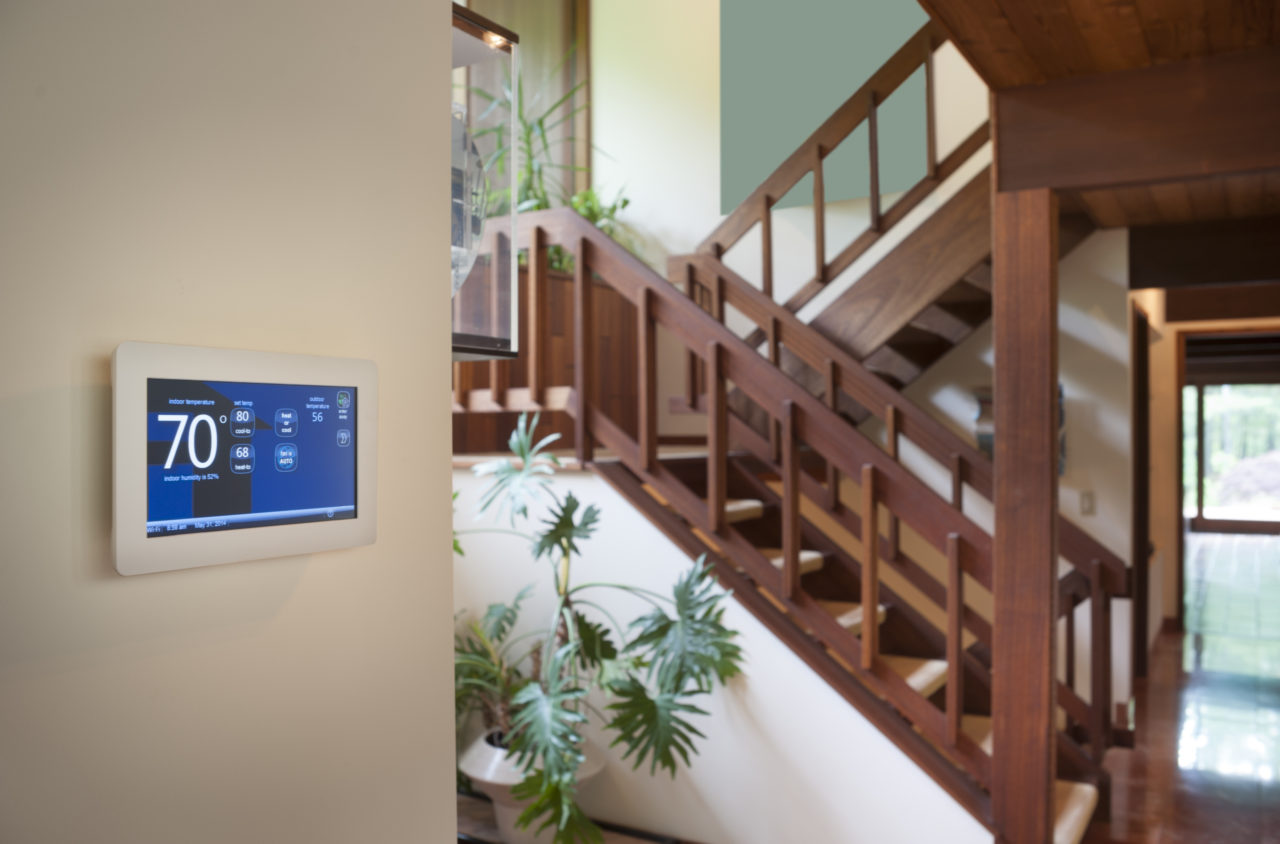Why does the temperature vary so much between floors in my home in Charlotte?
Do you struggle with hot and cold spots throughout your multi-level home? Sometimes it is due to the lack of insulation. Other times the blame goes to improper window installation. But for many multi-story homes, winter discomfort stems directly from the HVAC system. Here are a few reasons the temperature between floors in your home could vary significantly.
One system for two floors in your Charlotte home
It can be a challenge to maintain comfortable temperatures in an older two-story home with only one central air-conditioning and heating system. Using two systems has many advantages, but it is not always the best choice.
The age and design of your house may affect your decision, along with the costs of purchasing and operating a second system. Oftentimes, two systems will not work due to construction and location of your existing ductwork.
Consult the professionals at Andersen Heating & Cooling for a proper assessment of your home to determine if a second system is the best choice for your home.
Not enough returns
The number and location of your return vents are an important factor for a comfortable home. The HVAC system is basically recirculating air from inside the home. If return vents are blocked or not located properly, the equipment cannot perform efficiently.
Conditioned air needs a place to escape. Your return vents pull in conditioned air and put it back into the system, allowing proper air pressure inside your home. Never block or close return vents. This can damage your equipment, cause duct leaks, and decrease the efficiency of your system.
Warm air rises
Because warm air rises naturally, two-story homes may require more cooling upstairs during the summer months, but more warm air on the first floor during the winter.
Do not try to control the air flow by closing off supply vents as this can damage the system and interfere with efficiency. Instead consider installing ceiling fans in the upstairs rooms to promote air circulation.
Other possible options would be to install a zoning system or consider added a ductless mini-split upstairs.
Thermostat location
Because your thermostat is reading the ambient air and comparing it to the target temperature you have set for your home, proper placement of the device is crucial for operation. To properly measure the conditioned air temperature in your home, the thermostat is usually installed within eight feet of a return vent because the air moving through this vent is already conditioned air.
Never place a thermostat near a window, a supply vent, in direct sunlight, or near a door. These areas can cause a false ambient temperature reading. Always place a thermostat in a central location, on an interior wall, about 55-60 inches from the floor.
For ideal comfort and equipment efficiency, the recommended thermostat setting is 78º Fahrenheit. In the winter, 68º Fahrenheit is recommended for energy savings.
Zoning needed
In some situations a zone system may be necessary if you have one system but multiple levels, high cathedral ceilings, or large expansive rooms. Installing zoning equipment, you can divide your home into temperature zones, each controlled by its own thermostat.
Essentially, one heating and air-conditioning system has multiple thermostats, strategically located controlling dampers that open and close accordingly. Retrofitting a zone system can be difficult, but is possible. Ideally, a zone system is installed during construction of a home because dampers are installed in the main duct trunk line, as well as the branches of duct work to rooms.
Complex zone systems include a damper control panel, multi-zoned thermostats and sensors. Some systems come with the ability to control the zone system through your smartphone. Heating and cooling a multi-level home does not have to be complicated.
Understanding why you have a temperature variance between the floors of your home is the first step to resolving your comfort issues.
Make sure to contact a certified heating and air contractor like Andersen Heating & Cooling to determine the best solution for your home.


